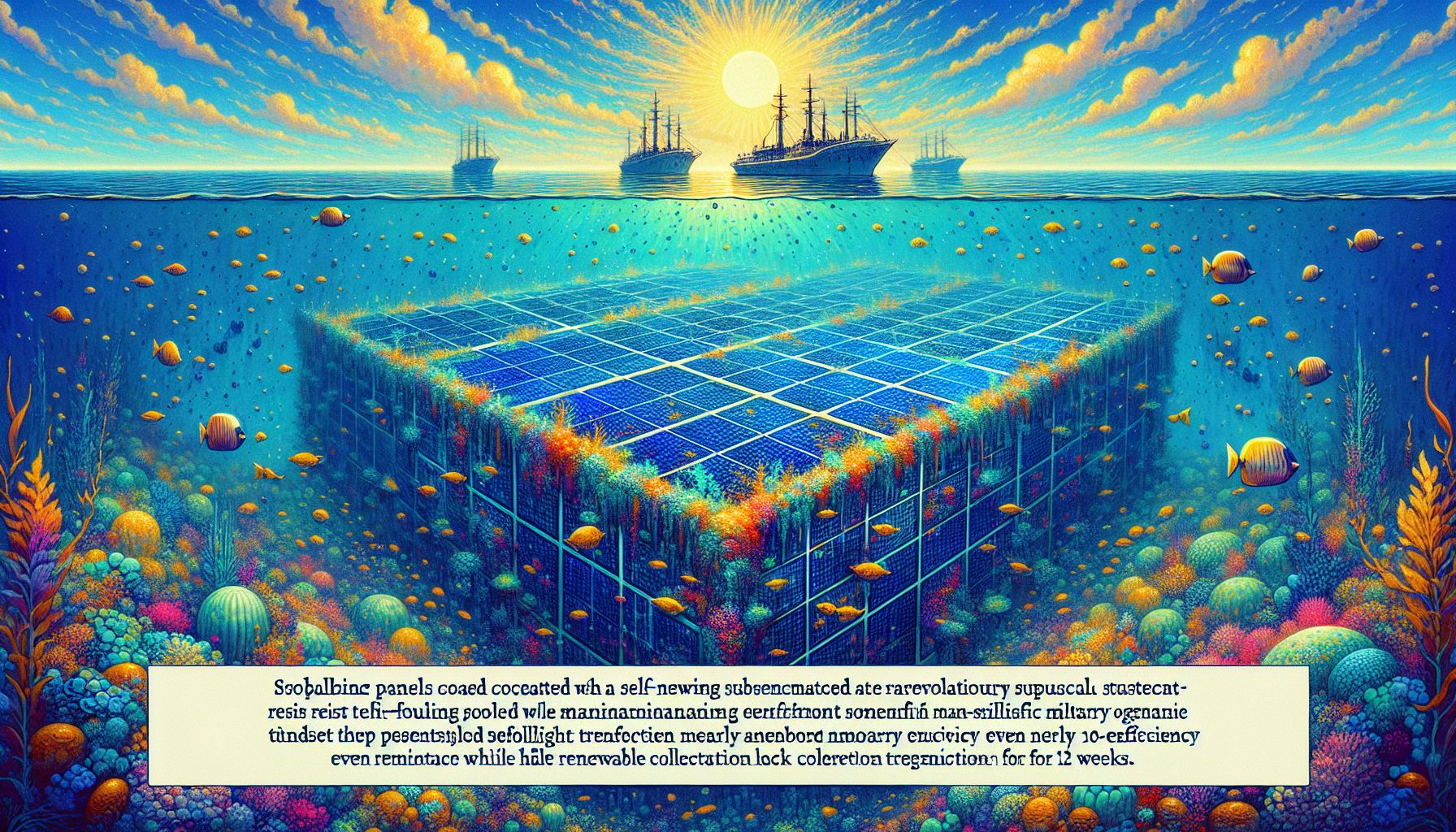Navy-Funded Breakthrough: Underwater Solar Panels Maintain Full Efficiency

Global, Thursday, 29 August 2024.
Researchers have developed a revolutionary coating for underwater solar panels, funded by the US Navy. This self-renewing coating prevents biofouling while maintaining light transmission, allowing panels to retain nearly 100% efficiency after 12 weeks in seawater. This innovation could transform renewable energy collection in aquatic environments.
Combatting Biofouling
Biofouling, the unwanted accumulation of microorganisms, plants, algae, or small animals on wetted surfaces, has long been a significant challenge for underwater equipment. This natural process can severely hamper the efficiency of solar panels submerged in water, as the growth of organisms blocks sunlight and reduces energy output. Traditional methods to combat biofouling involve regular mechanical cleaning, which is both costly and labor-intensive.
Innovative Coating Developed
Researchers at the Technical University of Denmark, funded by the US Navy, have developed a groundbreaking self-sustaining antifouling coating designed specifically for underwater solar panels. Published in the journal Progress in Organic Coatings, the innovation utilizes nano-sized cuprous oxide (Cu2O) and zinc oxide (ZnO) pigments combined with an organic biocide. This composition forms a porous layer that releases biocidal compounds into seawater to prevent the growth of biofouling organisms[1].
Self-Renewing Mechanism
The unique feature of this coating is its self-renewing mechanism. When exposed to seawater, the pigments dissolve and create a porous layer that allows seawater to penetrate, triggering the release of the biocide. This process not only prevents biofouling but also ensures that the coating erodes uniformly. As the outer layer wears away, a fresh layer of the coating is exposed, maintaining its antifouling properties and ensuring consistent light transmission[2].
Impressive Test Results
In rigorous field tests conducted in Florida, the coated solar panels maintained nearly 100% efficiency after 12 weeks underwater. This is a significant improvement over existing methods, which often suffer from reduced efficiency due to biofouling. The research team also tested the coating in Danish waters, where it demonstrated similar effectiveness. However, it’s worth noting that the coating’s efficacy is limited to saltwater environments[3].
Potential Applications
The implications of this innovation are vast. Underwater solar panels with this coating can be used in a variety of marine applications, including powering autonomous underwater vehicles (AUVs) and other marine equipment that require continuous energy. This technology could also play a crucial role in offshore renewable energy farms, where maintenance and cleaning are particularly challenging and costly[4].
Future Prospects
Looking ahead, the researchers are optimistic about the commercial viability of their invention. They believe that with further development and scaling, this coating could revolutionize the way we harness solar energy in aquatic environments. By significantly reducing maintenance costs and improving efficiency, this innovation represents a promising step forward in the quest for sustainable energy solutions[5].

